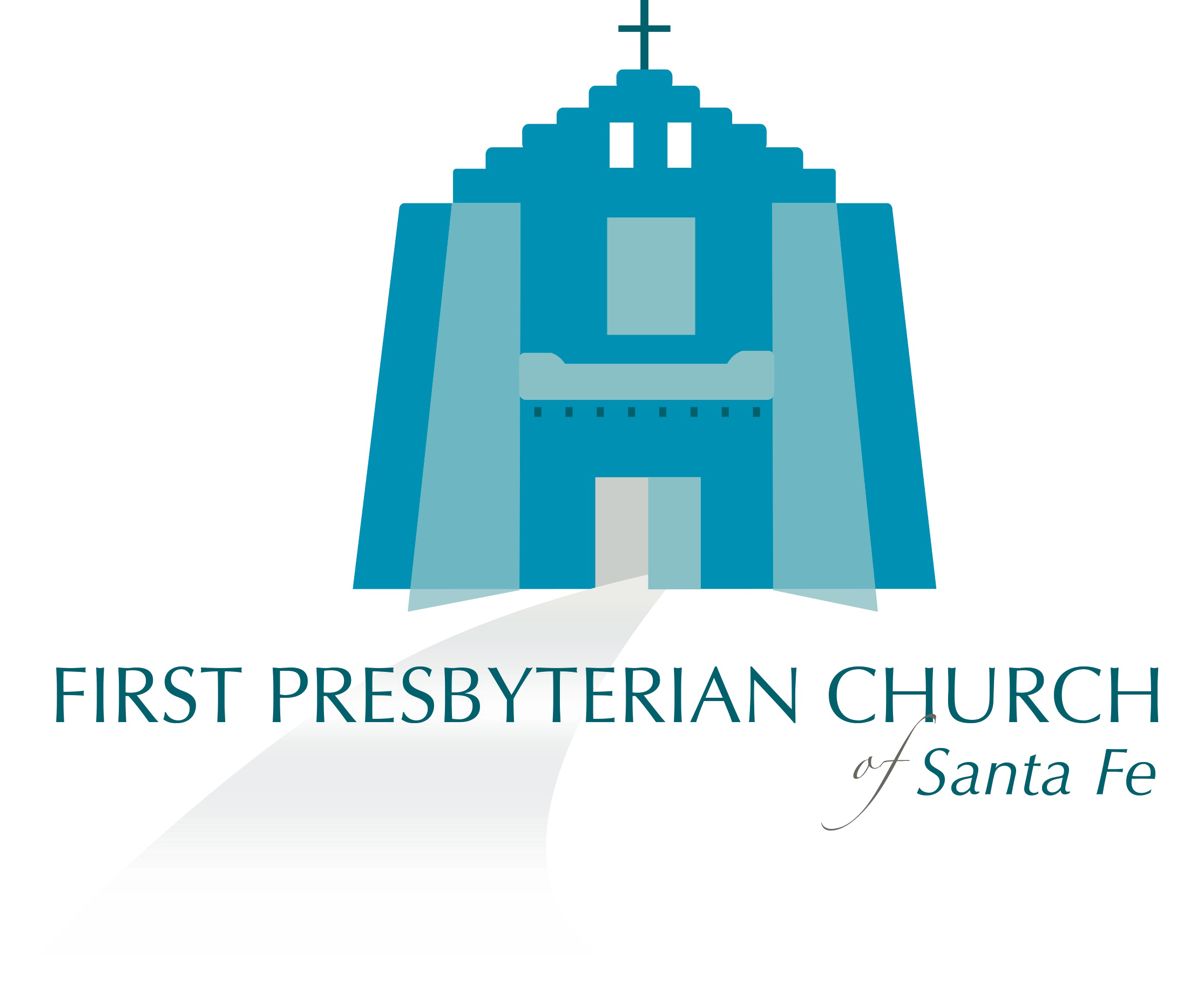The history of First Presbyterian Church of Santa Fe, the oldest Protestant Church in the New Mexico Territory, began in the post-civil-war west in a city very different from the one we enjoy today.
In her historical novel Not Ordered by Men, the first 100 years of history of First Presbyterian Church of Santa Fe, T.D. Allen tells the story of the beginnings of the church from the point of view of Jennie St. John Mitchell, wife of the General Robert B. Mitchell. She had moved to Santa Fe when her husband became the Territorial Governor. In the novel Mrs. Mitchell writes to the Board of Domestic Missions imploring them to send a minister to Santa Fe, saying,
“I want above all else to see my church come into this area of degradation and ignorance. It is well known that Presbyterians have ever gone into this country’s frontiers, fostering hand-in-hand both faith and truth, carrying the Bible in one hand and readers and spellers in the other, building in the wilderness both churches and schools.” [*See note below.]
The author of the novel could well intuit what Jennie Mitchell would have seen in Santa Fe from a historical letter written by Mrs. Isabella Graham to her granddaughters in 1866:
“Children and dogs run the streets all day long, splashing in the odorous puddles where swill collects. There are no schools as you know them, and none but Catholic churches. The Catholics are building a great church … but the saloon keepers have outbuilt everybody. The poor men of Protestant persuasion who are stationed here in the Army are left with no worthwhile diversion … The town is a living example of the filth and degradation to which human beings can sink when they are not enlightened and are left without the uplifting influences of the Church.”
[*NOTE: Recent research has shown that this story of Jennie St. John Mitchell’s letter to the Board of Missions of the Presbyterian Church appears to have first been published in Allen’s historical novel. The novel was commissioned by First Presbyterian Church of Santa Fe on the occasion of its 100th anniversary in 1967. Allen’s goal for the novel was to narrate the history of First Presbyterian Church through the stories of several individuals who played prominent roles in the founding and development of the church. Dialog and correspondence were used to illustrate the characters’ thoughts and feelings and make them come to life. Church records from 1866 and 1867 document that Mrs. Mitchell was one of the original members of First Presbyterian Church, invited the newly formed congregation to have its first worship service at the governor’s residence, and was active in the church while her husband was the Governor of the Territory of New Mexico. However, the letter included in Not Ordered by Men could not be confirmed through research and is now thought to be a literary device used to illustrate how Mrs. Mitchell might have longed for a Presbyterian church to be formed, not a historical document. Not Ordered by Men is available on amazon.com as a Kindle book.]
First Church Organized
Commissioned by the Board of Domestic Missions of the Presbyterian Church, the Rev. David F. McFarland stepped off the stage in Santa Fe and registered at the Exchange Hotel, on Thursday, November 22, 1866. He called on Mrs. Mitchell the next day. The first worship service was held two days later in the Council Chamber in the Palace of the Governors. Nearly 40 persons were present, many of whom were Army wives in their late 20s. Sabbath School was held that afternoon.
With a petition signed by 12 persons, McFarland officially organized the church in the Council Chamber in the Palace of the Governors on January 6, 1867. A plaque inside the Palace dedicated on January 6, 1967, celebrates this historical event.
Building Purchased
In March of that year, the ruins of an earlier Baptist Church that had failed were purchased along with two acres adjoining that property for $5,100. The church remains in the same location today.
Infant Tombstone Vandalized, Restored
On September 11, 1868, David and Amanda McFarland’s first son, Harry Fulton, aged seven months, died of cholera. His grave is one of the oldest in Santa Fe’s Fairview Cemetery.
In 2007, the headstone, which had been vandalized and stolen, was replaced by the History Committee of the Church from donations of church members.
Church Struggles, Then Builds
The church struggled in those early years. In 1874 there was only one person on the rolls—the postmaster. Within a few years of the church’s establishment, all five of the original trustees were gone —three had moved and two had been murdered.
By 1881, however, the church was able to replace the old adobe structure with a new red brick building. It was to have had a very tall steeple, but for some reason this was never built. A Victorian style manse was built to the north of the church structure.
